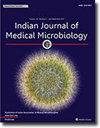Candida infections in COVID-19 patients: A review of prevalence, risk factors, and mortality
IF 1.4
4区 医学
Q4 IMMUNOLOGY
引用次数: 0
Abstract
Background
Candida spp. infections have increasingly been reported among COVID-19 patients, yet the epidemiological factors, diagnostic methods, and outcomes associated with these infections remain poorly understood. These infections, particularly in ICU settings, present significant challenges due to high mortality rates and rising antifungal resistance. This study aimed to investigate the occurrence, risk factors, treatment, and outcomes of Candida albicans and non-albicans Candida in COVID-19 patients, providing clinical and epidemiological insights.
Methods
A review following PRISMA guidelines was conducted. Searches were performed in PubMed, Embase, and BVS databases, covering articles published from January 2020 to May 2024. Inclusion criteria included case reports or case series providing detailed information on Candida spp. in COVID-19 patients. Data extraction focused on patient demographics, underlying diseases, antifungal and antibiotic therapies, antifungal susceptibility, resistance profiles, and outcomes. Statistical analyses were conducted using SPSS software.
Results
The review included 67 studies, totaling 223 COVID-19 patients. Male patients were predominant. Common comorbidities included hypertension, cancer, and dyslipidemia. Echinocandins were the primary antifungal treatment. Non-albicans Candida exhibited a higher resistance rate (47.10 %) compared to C. albicans (2.35 %). Overall mortality rates were high, at 60.50 % for C. albicans and 62.30 % for non-albicans. Significant risk factors for mortality included age, central venous catheter use, ICU admission, and corticosteroid therapy.
Conclusions
The study identified critical risk factors and clinical characteristics in COVID-19 patients with Candida infections. The high incidence of antifungal resistance among non-albicans and high mortality rates highlight the need for vigilant monitoring and targeted antifungal strategies to improve outcomes.
COVID-19患者中的念珠菌感染:患病率、危险因素和死亡率综述
背景:在COVID-19患者中,念珠菌感染的报告越来越多,但与这些感染相关的流行病学因素、诊断方法和结果仍然知之甚少。这些感染,特别是在ICU环境中,由于高死亡率和不断上升的抗真菌耐药性,提出了重大挑战。本研究旨在探讨COVID-19患者白色念珠菌和非白色念珠菌的发生、危险因素、治疗和结局,为临床和流行病学提供见解。方法按照PRISMA指南进行回顾性分析。在PubMed、Embase和BVS数据库中进行搜索,涵盖了从2020年1月到2024年5月发表的文章。纳入标准包括提供COVID-19患者中念珠菌详细信息的病例报告或病例系列。数据提取侧重于患者人口统计学、基础疾病、抗真菌和抗生素治疗、抗真菌敏感性、耐药性概况和结果。采用SPSS软件进行统计分析。结果纳入67项研究,共计223例COVID-19患者。男性患者居多。常见的合并症包括高血压、癌症和血脂异常。棘白菌素是主要的抗真菌药物。非白色念珠菌耐药率(47.10%)高于白色念珠菌(2.35%)。总体死亡率很高,白色念珠菌为60.50%,非白色念珠菌为62.30%。死亡率的重要危险因素包括年龄、中心静脉导管使用、ICU入院和皮质类固醇治疗。结论本研究确定了2019冠状病毒病合并念珠菌感染的关键危险因素和临床特征。非白色念珠菌中抗真菌耐药性的高发生率和高死亡率突出了警惕监测和有针对性的抗真菌策略以改善预后的必要性。
本文章由计算机程序翻译,如有差异,请以英文原文为准。
求助全文
约1分钟内获得全文
求助全文
来源期刊

Indian Journal of Medical Microbiology
IMMUNOLOGY-
CiteScore
2.20
自引率
0.00%
发文量
154
审稿时长
73 days
期刊介绍:
Manuscripts of high standard in the form of original research, multicentric studies, meta analysis, are accepted. Current reports can be submitted as brief communications. Case reports must include review of current literature, clinical details, outcome and follow up. Letters to the editor must be a comment on or pertain to a manuscript already published in the IJMM or in relation to preliminary communication of a larger study.
Review articles, Special Articles or Guest Editorials are accepted on invitation.
 求助内容:
求助内容: 应助结果提醒方式:
应助结果提醒方式:


